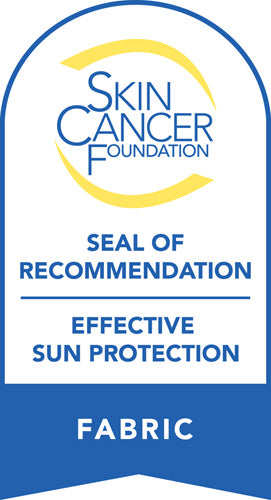The Shocking Truth About the Lasting Effects of Child Sunburn
One out of every three Americans gets sunburned every year. And unfortunately, many of them are children.
Sunburn is the painful result of UV light exposure to the sun. In the short term, child sunburn causes swelling, pain, redness, irritation, blisters, and itching in sunburned areas. But unprotected sun exposure can also lead to heatstroke, skin cancer, and premature aging.
Let's explore the lasting effects the sun can have on a child's body, and what you can do to prevent sunburn and protect your little ones.
Child Sunburn and Heatstroke
UV rays do not only harm the skin. Their intensity can affect your overall health, resulting in serious health concerns.
Heatstroke can occur after a long day in the hot sun. A person's body temperature becomes dangerously high, and it can no longer cool itself. The body overheats and leads to various problems. It is important to understand the risk factors.
The signs of heatstroke include:
- High fever and chills
- Dry skin
- Vertigo
- Mental confusion
- Muscle weakness and cramping
- Nausea
- Rapid shallow breathing
- Exhaustion
- Headaches
- Extreme thirst
Heatstroke can affect anyone who doesn't protect their body from UV rays. It is most common in children under two, elderly people, and individuals with underlying health conditions (such as diabetes and circulation disorders).
Treating Heatstroke in Children
If your child is showing signs of heatstroke, call 911. While waiting for the ambulance, move your child to a cool location. Open nearby windows or run a fan to increase ventilation.
Give your child plenty of water. If you can, give them a cool bath or cover your toddler with damp towels to decrease their body temperature.
Long-Term Effects of Heatstroke
Heatstroke can be deadly. When left untreated, it can cause brain damage and organ failure. Professional care is required for recovery.
As a parent, keep in mind heat stroke is easy to prevent.
Monitor how long your children are in the sun. Invest in infant sun protection clothing to regulate body temperature. If your child is in the heat for a while, give them a cool bath or shower afterward.
Child Sunburn and Melanoma
Ultraviolet rays from the sun or tanning beds impair skin cells. They impact DNA, causing irreversible damage. Over time, extensive damage causes mutations that result in skin cancer, specifically melanoma.
Melanoma develops when melanocytes, the skin cells that create brown (tan) colors, take over the body. The cancerous cells spread everywhere but are most common on the neck, face, chest, back, and legs.
While melanoma is not the most common form of skin cancer, it is the most dangerous. The cells can quickly multiply and spread throughout. Without early treatment, melanoma can cause widespread health problems.
Approximately 300 children in the US are diagnosed with melanoma every year. Since 1973, pediatric melanoma has increased by 2% per year.
Unprotected UV exposure, a weakened immune system, and genetics increase a child's risk of developing melanoma. Skin cancer is most common in kids with fair skin, freckles or moles, and blonde or red hair.
Treating Melanoma in Children
Pediatric centers help kids recover from skin cancer. Children diagnosed with melanoma undergo surgery to remove the cancerous cells. The type of procedure depends on how far the cancer cells have spread, and how easy it is to remove them.
Chemotherapy and radiation therapy are used if the disease has reached major organs or the lymph nodes.
Long-Term Effects of Melanoma
Children with melanoma have higher success rates compared to adults. Early detection and efficient treatment options lead to recovery, even if the cancerous cells have spread throughout the body.
Melanoma can be prevented by decreasing child sunburn. All children, not only those at high risk, should be fitted with protective clothing and sunscreen when spending time outside.
Keep in mind that even overcast days can cause sunburn. Up to80% of UV rays can move through clouds and burn the skin.
Child Sunburn and Long-Term Bodily Damages
The skin changes after it has been burned. The immune system reacts to heal skin cells, but the more UV exposure, the worse the skin damage. Eventually, cells begin to break down and die off.
While the sunburn itself may heal, it can leave behind irreversible damage. For children, consistent UV exposure leads to a weakened immune system, skin problems, and premature aging as they get older.
Treating Sun Damage
Protect your children from long-term damage by using child and baby sun protection clothing. Try to stay in the shade and apply plenty of child-safe sunscreen to your little ones, even if the sun doesn't seem that hot.
Sunburn treatment for children includes cool showers, cold compresses, over-the-counter medicine, and topical moisturizers.
Children's ibuprofen can reduce irritation and inflammation. Moisturizers, such as aloe vera-based gels, relieve burned skin and stimulate cell repair.
Keep your child out of the sun until their skin has healed. Make sure your little one is drinking plenty of liquids to prevent dehydration and keep their immune system healthy.
Long-Term Effects of Sun Exposure in Children
A child's immune system is still developing. As the immune system continuously fights UV exposure, it weakens. Lowered immune health makes your child more susceptible to illnesses and infections.
Sun exposure can also interfere with the skin's natural ability to heal and repair itself, making children more prone to additional damages, like skin cancer.
The sun can also cause premature aging in children. It dries out the skin, leaving it red and inflamed. Over time, sunlight breaks down collagen and makes a person appear older.
Unprotected UV exposure can cause:
- A decrease in skin elasticity
- Wrinkles
- Fine lines
- Sunspots
- Sagginess and loss of volume
90% of changes to the skin are caused by sun exposure. Children are born with healthy and supple skin, but UV rays can quickly change that and cause long-term problems.
Sun Protection Clothing for Kids
Unprotected sun exposure leads to child sunburn and long-lasting health concerns.
As a parent, you have the power to protect your kids. Prevent long-term sun damage in children by investing in the right clothing such as UPF sun hats and rash guards.
Visit our online store to browse our collection of sun-safe apparel for kids. We make it our mission to provide protective clothing for the whole family.



